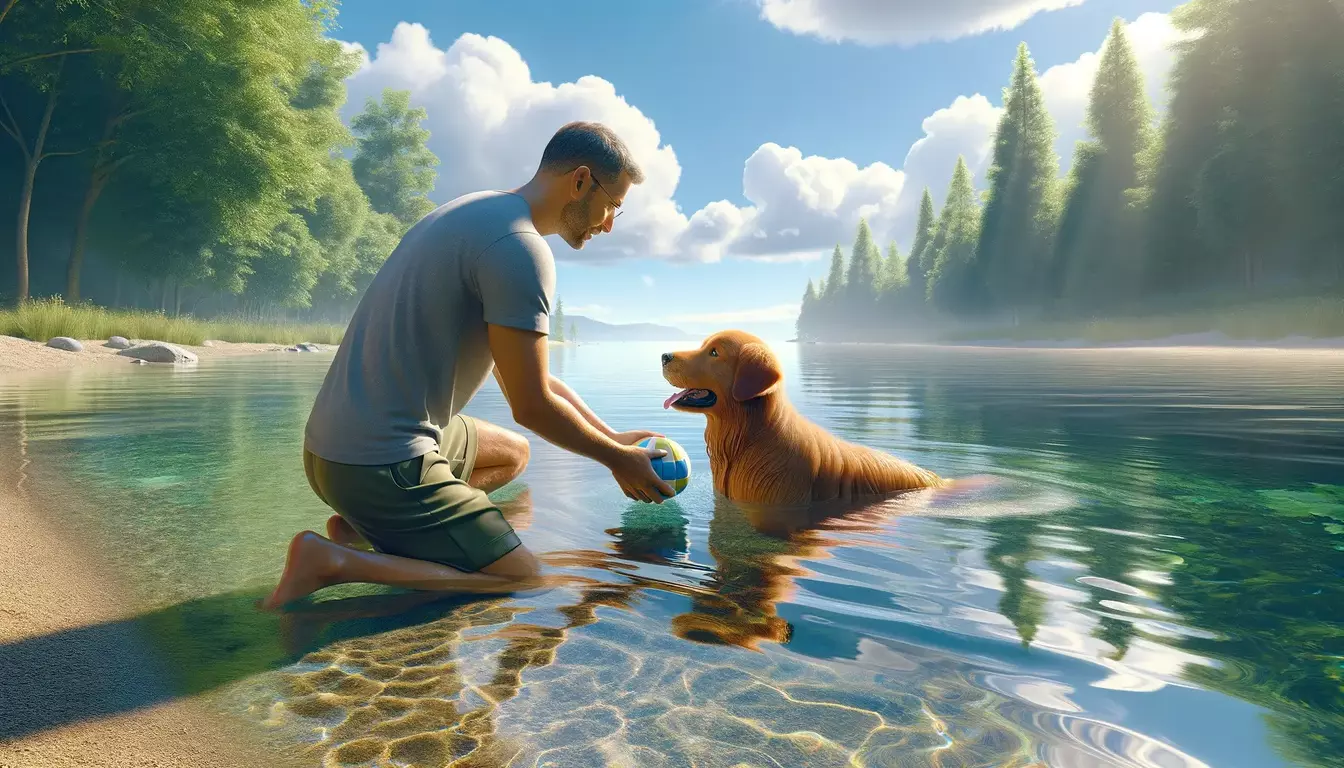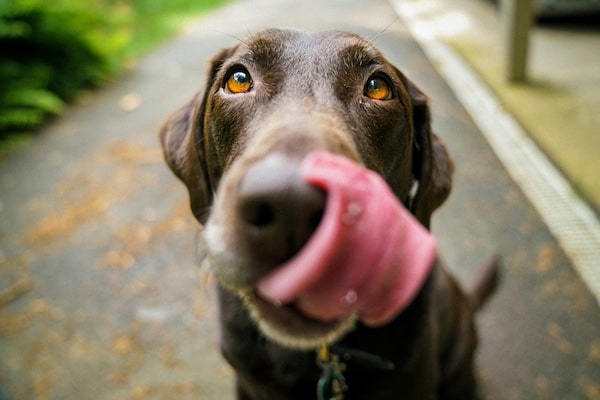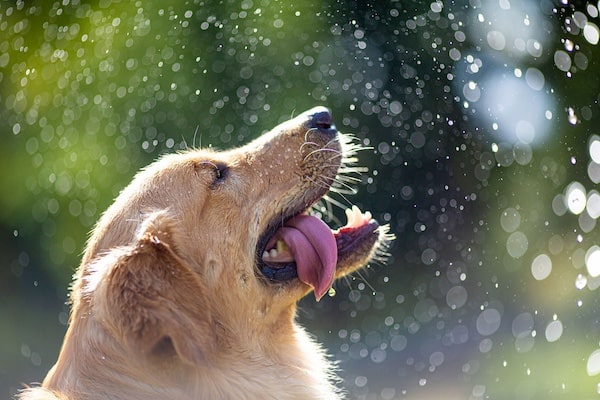Swimming is a fantastic activity for dogs, offering both physical and mental benefits. However, introducing your dog to swimming requires careful consideration of their natural abilities and safety to ensure a positive experience. This guide begins by exploring the diverse swimming capabilities of different dog breeds and the advantages of swimming, followed by crucial safety information to help you responsibly guide your dog through their aquatic adventures.
While many dogs are natural swimmers, some breeds excel in water more than others. Breeds like Labrador Retrievers, Portuguese Water Dogs, and Newfoundlands have historical and physical traits that make them adept in aquatic environments. These breeds often have water-resistant coats, webbed feet, and strong builds that enhance buoyancy and swimming strength. On the other hand, breeds with shorter limbs and compact bodies, such as Bulldogs and Pugs, may find swimming challenging and exhausting due to their physical structure, which does not support buoyancy as well.
The benefits of swimming for dogs are manifold. Physically, it’s an excellent form of exercise that promotes cardiovascular fitness, muscle strength, and joint health, all while being low-impact. This makes it particularly beneficial for older dogs or those with joint issues, such as arthritis. Mentally, swimming can be a stimulating and enjoyable activity that alleviates anxiety and burns excess energy, contributing to a well-balanced and happy dog.
Introducing your dog to swimming safely is paramount. Every dog is different, and their introduction to water should be handled with patience and attentiveness to their comfort and stress levels. Safety begins with choosing the right environment, such as calm, shallow waters where dogs can feel the bottom under their paws before they attempt to swim. Using dog life jackets, especially for breeds that are not natural swimmers or are new to swimming, can provide additional safety and boost confidence.
Proper technique is also crucial. It’s important to gradually introduce your dog to water, starting with shallow areas where they can wade before progressing to deeper water. Constant supervision is essential, and you should always be prepared to assist your dog if they show signs of distress or fatigue. Positive reinforcement, like treats and praise, should be used to encourage your dog and associate water with positive experiences.
By understanding your dog’s natural abilities and adhering to safety best practices, you can ensure that swimming is a fun and safe activity for your dog. This guide will equip you with the knowledge and techniques to confidently introduce your furry friend to the joys of swimming.
Preparing to Swim
Before introducing your dog to the water, it’s essential to assess their readiness for swimming and gather all the necessary items to ensure a safe and enjoyable experience. This section will guide you through evaluating your dog’s suitability for swimming lessons and detail the essential gear you’ll need.
Assessing Your Dog’s Readiness
Age: Consider your dog’s age before starting swimming lessons. Puppies younger than a few months may not have the physical coordination or strength for swimming, while very old dogs may have health issues that could be exacerbated by swimming. Generally, it’s best to start when your dog is young enough to be agile but mature enough to follow commands, typically around 6 months of age.
Health Status: A veterinary check-up is recommended to determine if your dog is in good health for swimming. Dogs with certain health conditions, such as heart or respiratory issues, may not be suited for strenuous activities like swimming. Ensure your dog is up to date with vaccinations, as water bodies can be sources of infection.
Breed Considerations: While many dogs can swim, not all are built for it. Evaluate your dog’s breed characteristics, such as body shape and size. Breeds with short muzzles (brachycephalic), such as Bulldogs or Pugs, may have difficulty breathing when exerting themselves in water. Conversely, breeds with water-resistant coats and webbed feet are typically more adept at swimming.
Behavioral Readiness: Your dog should be comfortable with basic commands and show signs of confidence around water. If your dog exhibits fear or anxiety when near water, additional preliminary training on dry land is advised to build comfort and trust.
What You’ll Need
To ensure your dog’s swimming sessions are safe and enjoyable, you’ll need to prepare the right equipment. Here’s a list of essential items:
- Life Vest: A well-fitted dog life vest is crucial, especially for dogs that are new to swimming or are not natural swimmers. It helps keep your dog afloat and makes them more visible in the water.
- Floating Toys: Toys that float are excellent for encouraging dogs to swim. Choose bright colors to make them easily visible. Toys also add an element of fun and can be used to teach fetching skills in water.
- Waterproof Leash: A long, waterproof leash can help you guide your dog in water and ensure they don’t swim too far away or into dangerous areas.
- Towels: Have one or more towels on hand to dry your dog off after swimming, which helps prevent chills and discomfort, especially in cooler weather.
- Fresh Water and Bowl: Bring fresh water and a bowl to encourage your dog to drink and avoid ingesting the swimming water, which may contain harmful pathogens or chemicals.
- Sunscreen: Dogs, especially those with short or light-colored coats, can get sunburned. Use a pet-safe sunscreen to protect your dog from harmful UV rays, especially if you’re swimming in the middle of the day.
With a proper assessment and the right gear, you’ll be ready to safely introduce your dog to the water, setting the stage for successful swimming lessons.
Introduction to Water
Introducing your dog to water in the right way is critical to their success and enjoyment of swimming. This section will guide you through selecting the ideal environment for their first water experience, how to introduce them to water gradually, and using positive reinforcement techniques to make the experience enjoyable and rewarding.
Choosing the Right Environment
Selecting an appropriate and safe environment for your dog’s first swimming experience is crucial. Here are some key factors to consider:
- Type of Water Body: Opt for a quiet, shallow body of water such as a calm lake, pond, or a slow-moving stream. Avoid areas with strong currents, deep water, or heavy boat traffic which can be intimidating and dangerous for beginners.
- Water Quality: Ensure the water is clean and free of pollutants, algae, and dangerous debris. Dirty or contaminated water can cause infections and other health issues.
- Entrance and Exit Points: Choose a location with a gentle, sloping entry that allows your dog to walk into the water gradually. Make sure there are also easily accessible exit points.
- Crowd Factor: A less crowded or private spot is preferable for the first few times as it helps keep distractions to a minimum, allowing your dog to focus on learning.
First Water Contact
Introducing your dog to water should be a slow and controlled process to ensure they feel secure at every step. Follow this step-by-step approach:
- Walk Along the Shore: Start with a walk along the shore and let your dog explore the area and get used to the sound and sight of water.
- Get Your Feet Wet: Encourage your dog to follow you into shallow water. Start by getting their paws wet and slowly moving deeper as they feel comfortable.
- Play in the Shallow Water: Use toys to make the initial experience fun. Playing in the shallows can help build positive associations with water.
- Go Deeper Gradually: As your dog becomes more confident, encourage them to follow you into slightly deeper water. Keep it gradual and always observe their comfort level.
Positive Reinforcement Techniques
Creating a positive association with water is essential for a successful introduction to swimming. Use these positive reinforcement techniques:
- Treats: Bring along your dog’s favorite treats to reward them for each new step they take into the water. This reinforces their good behavior and makes the experience rewarding.
- Praise: Use enthusiastic verbal praise to encourage your dog as they make progress. Dogs respond well to a happy, encouraging tone of voice.
- Patience and Consistency: Keep the training sessions short but regular. If your dog seems hesitant or stressed, take a step back and give them more time to adjust before trying again.
- Make It a Group Activity: If possible, involve other water-friendly dogs in the training sessions. Dogs often learn better when they see other dogs engaging in and enjoying an activity.
Using these strategies, you can help ensure your dog’s first experiences with water are positive and fun, setting a solid foundation for future swimming lessons. This approach not only enhances their physical abilities but also builds confidence and trust between you and your pet.
Basics of Swimming
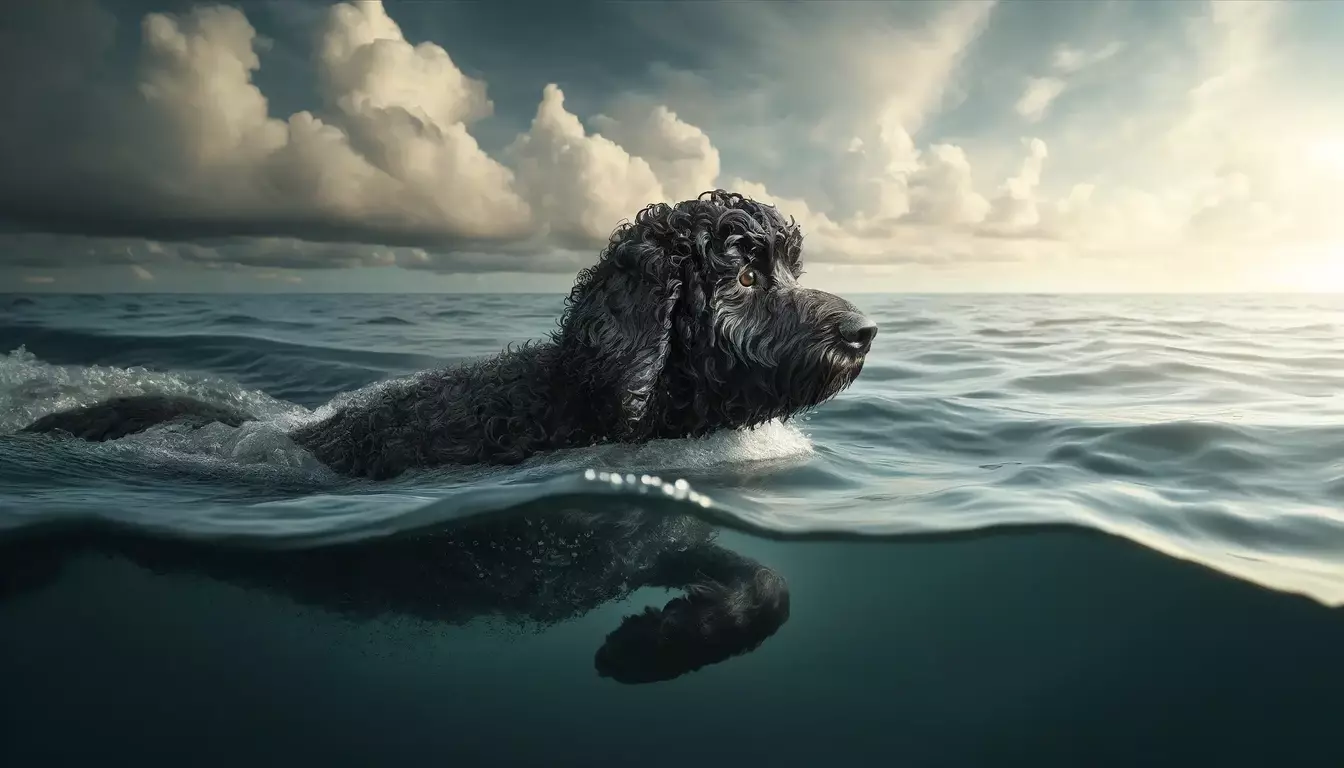
After your dog has become comfortable with the water’s edge and shallow areas, it’s time to introduce them to actual swimming. This section will cover techniques to encourage your dog to enter deeper water willingly, guide them through their first swimming lesson, and suggest ways to use toys and games to enhance the learning experience.
Teaching Your Dog to Enter the Water
Encouraging your dog to voluntarily enter deeper water is a key step in swimming training. Here are some techniques to help facilitate this transition:
- Lead by Example: If possible, enter the water yourself and show that it’s safe and fun. Use a cheerful tone to invite your dog in.
- Use a Ramp or Steps: If available, use a ramp or steps initially to allow your dog to gradually enter the water without having to jump or dive in, which can be intimidating.
- Slow and Steady: Allow your dog to proceed at their own pace. Never force or throw your dog into the water, as this can create a negative association and long-term fear.
- Reward Progress: Every small step they take towards entering deeper water should be met with a treat and praise to reinforce positive behavior.
First Swimming Lesson
Once your dog is comfortable getting into deeper water, you can start guiding them on how to swim. This involves teaching them to float and paddle:
- Support Their Body: Initially, support your dog under their belly to help them feel buoyant. This support reassures them and prevents panic.
- Encourage Paddling: Most dogs will naturally start to paddle with their legs. Encourage this movement by slowly moving backward in the water, prompting them to come towards you.
- Practice Floating: Before paddling extensively, let your dog experience floating with your support. This builds their confidence in water’s buoyancy.
- Gradual Release: As your dog becomes more confident, gradually lessen your support, allowing them to rely more on their paddling. Always stay close enough to assist if they become anxious or start to sink.
Using Toys and Games
Integrating toys and games into swimming sessions can greatly enhance the enjoyment and engagement for your dog, reinforcing swimming as a fun activity:
- Fetch with Floating Toys: Use floating toys to play fetch. Throw a toy into a safe, reachable distance in the water and encourage your dog to retrieve it. This not only improves their swimming skills but also their willingness to enter the water.
- Chase and Race: If you’re in a safe, enclosed area and your dog is sufficiently confident, swim alongside them and encourage a playful chase. This can be an enjoyable way for them to learn to move in the water.
- Water-Based Obstacle Courses: Set up a simple water-based obstacle course with floating toys and platforms that require your dog to swim from one point to another.
By combining these teaching techniques with fun activities, your dog’s swimming skills will improve rapidly. They’ll learn to enjoy the water while also gaining great physical exercise, ensuring that each swimming session is eagerly anticipated.
Advanced Swimming Techniques
Once your dog has mastered the basics of swimming, you can progress to more advanced techniques and training exercises. This section will explore ways to build your dog’s swimming endurance, introduce them to different swimming strokes, and prepare them for swimming off-leash safely.
Building Endurance
To help your dog swim for longer periods and with greater intensity, consider the following strategies:
- Gradual Increase: Slowly extend the length of the swimming sessions over time. Start with short sessions of a few minutes and gradually increase as your dog builds strength and confidence.
- Interval Training: Incorporate periods of vigorous swimming followed by rest or gentle swimming. This can help increase stamina and muscle strength.
- Regular Sessions: Consistency is key in building endurance. Try to have regular swimming sessions to keep the muscles toned and the skills sharp.
- Monitor Your Dog: Always keep an eye on your dog for signs of fatigue such as excessive panting, slowing down, or trying to leave the water. Allow them to rest and recover as needed.
Teaching Different Swimming Strokes
While dogs naturally do the “dog paddle,” they can also learn variations that can be useful for different swimming situations:
- Extended Dog Paddle: Teach your dog to extend their limbs more deliberately while paddling, which can be useful in deeper or more turbulent water.
- Underwater Diving: Some dogs may enjoy diving underwater briefly to retrieve objects. Start by dropping toys in shallow water and gradually increase the depth as your dog becomes comfortable retrieving them.
- Back Paddle: Just like backstroke, dogs can learn to float on their backs, though this may not be suitable for all dogs. This can be a relaxing and enjoyable way for your dog to float and rest.
Off-Leash Swimming
Swimming off-leash allows your dog greater freedom and enjoyment, but it comes with its own set of precautions:
- Recall Training: Before allowing your dog to swim off-leash, ensure they have a solid recall command that they obey consistently, even in distracting environments.
- Start in Enclosed Areas: Begin off-leash training in enclosed or semi-enclosed water bodies where there are no risks of strong currents or open sea dangers.
- Use of Floating Long Lines: If transitioning from on-leash to off-leash, use a floating long line that allows your dog some freedom but still gives you control if needed.
- Observe and React: Always keep a close watch on your dog when they are swimming off-leash. Be ready to intervene if they seem to be straying too far or getting into difficulty.
By advancing to these more complex swimming techniques and precautions for off-leash swimming, you can enhance your dog’s abilities and enjoyment in the water. This progression not only improves their physical health but also deepens the bond between you and your pet through shared activities and trust.
Health and Safety
Ensuring the health and safety of your dog during swimming activities is paramount. This section will discuss how to recognize signs of fatigue and stress, identify common health risks associated with water activities, and handle emergencies effectively.
Recognizing Signs of Fatigue and Stress
Being able to recognize when your dog is tired or stressed is crucial to preventing accidents and health issues. Here are key signs to watch for:
- Excessive Panting: While dogs pant to cool down, overly heavy or rapid panting may indicate overheating or exhaustion.
- Whining or Barking: Unusual whining or barking can be signs of discomfort or stress.
- Reluctance to Continue: If your dog hesitates or refuses to go back into the water, it might be time to take a break.
- Change in Posture: Sluggish or stiff movements can be indicators of fatigue or muscle soreness.
Common Health Risks
Swimming poses certain health risks that dog owners should be aware of and know how to prevent:
- Ear Infections: Water can get trapped in the ears, leading to infections. Dry your dog’s ears thoroughly after swimming and consider using vet-recommended ear cleaners.
- Water Intoxication: Ingesting too much water can lead to water intoxication, which is dangerous and potentially fatal. Watch for symptoms like lethargy, bloating, vomiting, and coordination problems.
- Hypothermia: Even in warm weather, dogs can suffer from hypothermia if they swim for too long, especially breeds with thin coats. Dry your dog well after swimming and keep them warm.
- Cuts and Scrapes: Water bodies can hide hazards like sharp rocks or debris. Check your dog for any injuries after swimming and treat minor cuts or scrapes promptly.
Emergency Response
Knowing basic first aid and what to do in a swimming-related emergency can make a significant difference in outcomes:
- Basic First Aid: Familiarize yourself with basic pet first aid techniques, such as CPR for dogs and how to treat minor wounds.
- Immediate Response: If your dog appears to be in distress, remove them from the water immediately and assess their condition. Check if they are breathing and responsive.
- Seek Veterinary Care: For symptoms of water intoxication, hypothermia, or if your dog is unresponsive after first aid efforts, seek veterinary care immediately.
- Keep Emergency Contacts Handy: Always have the phone number for your veterinarian and a nearby emergency animal hospital on hand when you take your dog swimming.
With proper understanding and preparedness, you can ensure that swimming remains a safe and joyful activity for your dog. This awareness of health and safety not only protects your dog but also enhances the overall experience, making every swim session enjoyable and worry-free.
Beyond Basics
As your dog becomes more proficient in swimming, you might consider expanding their activities to include competitive sports or maintaining a year-round swimming routine. This section explores opportunities for engaging in competitive water sports and offers advice on how to safely continue swimming throughout different seasons.
Competitive Swimming and Diving
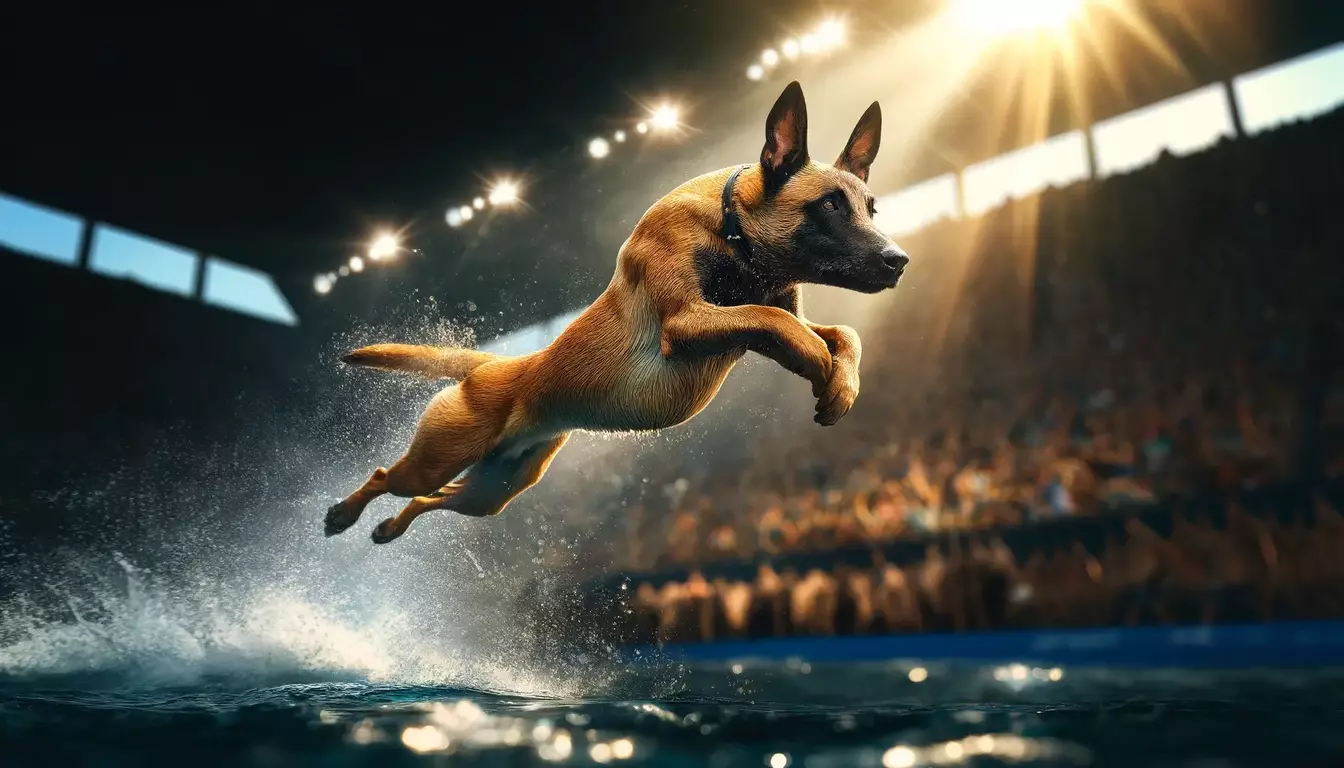
For dogs that show a keen interest and ability in swimming, competitive water sports can be an exciting option. Here’s how to get started:
- Dock Diving: One of the most popular canine water sports, dock diving involves dogs jumping from a dock into a body of water in pursuit of a toy. This sport is excellent for dogs who love retrieving and have good jumping abilities.
- Water Retrieval Trials: These are timed events where dogs are judged on their ability to retrieve objects from the water quickly and efficiently.
- Canine Surfing and Paddleboarding: For dogs that are confident in stronger water currents, surfing or paddleboarding can offer a challenging and fun experience.
To begin with competitive swimming and diving:
- Join a Club: Look for local clubs that offer training and competitive events. These clubs also provide a great way to meet other enthusiastic dog owners.
- Professional Training: Consider professional training to refine your dog’s techniques and improve their performance in competitions.
- Health and Fitness: Ensure your dog is in optimal health and condition for competitions, which often require more intensity and stamina than casual swimming.
Year-Round Swimming
Maintaining a regular swimming routine throughout the year can be beneficial for your dog’s health, provided it’s done safely:
- Cold Weather Swimming: In colder climates, opt for indoor swimming facilities if available. If swimming outdoors, make sure the water is not too cold, which can lead to hypothermia, and always dry your dog thoroughly after swimming.
- Warm Weather Precautions: In hot climates, avoid swimming during peak heat hours to prevent overheating. Always ensure your dog has access to fresh drinking water and shade.
- Adapting to Conditions: Always assess environmental conditions like water temperature and weather before deciding to swim. Adjust the duration and intensity of swimming sessions based on these factors.
- Routine Care: Regularly check your dog for signs of wear and tear such as pad softening, cuts, or dry skin, and address any issues promptly. Use dog-specific moisturizers if your dog’s skin becomes dry or irritated from frequent swimming.
By engaging in competitive water sports and maintaining a year-round swimming routine, you can help your dog not only stay physically fit but also mentally stimulated. This ongoing engagement with diverse activities will ensure your dog enjoys a rich and fulfilling life.
Summary
Teaching your dog to swim can be a rewarding journey that enhances both their physical health and the bond you share. Throughout this guide, we’ve covered essential techniques and safety tips to ensure your dog not only learns to swim but also enjoys the water safely and confidently.
Recap of Key Points
- Assessing Readiness: Evaluate your dog’s age, health, and breed characteristics to determine their suitability for swimming.
- Introduction to Water: Start with gentle introductions at a safe, shallow water body, using positive reinforcement to build comfort and confidence.
- Basics of Swimming: Gradually teach your dog to enter the water, paddle, and float, always prioritizing their comfort and safety.
- Advanced Techniques: As they progress, introduce more challenging activities like different swimming strokes and off-leash swimming, always under supervision.
- Health and Safety: Recognize signs of fatigue and stress, understand common health risks associated with swimming, and know how to respond in emergencies.
- Beyond Basics: Explore competitive swimming and diving and consider maintaining a year-round swimming regimen to keep your dog fit and engaged.
Encouragement to Continue Practicing
Swimming is more than just a physical activity; it’s a stimulating experience that can significantly contribute to your dog’s quality of life. Continue practicing and exploring new water-related activities with your dog. Regular sessions will not only enhance their skills but also deepen the trust and connection between you. The joy and health benefits they reap from swimming are well worth the commitment.
Additional Resources
For those looking to expand their knowledge and find more specialized training, here are some resources:
- Further Reading:
- The Dog’s Mind by Bruce Fogle: Understand your dog’s behavior and needs.
- Water Dog by Richard A. Wolters: A specific guide to training hunting dogs in water.
- Websites like AKC.org offer resources and articles on dog water safety and training techniques.
By utilizing these resources and continuing to build on the foundations laid by this guide, you can ensure that swimming remains a safe, enjoyable, and enriching part of your dog’s life. Keep nurturing their skills, and enjoy every splash and paddle along the way!
